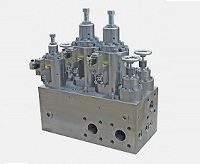Leakage in hydraulic systems can quickly get out of hand and the consequences are usually expensive, but can also be hazardous to personnel and the environment. Thankfully, most external leakages can be prevented through proper design, assembly, operation and maintenance of your hydraulic system.
The main source of external leakage in a hydraulic system is through fittings and connections. There are numerous styles and standards for fittings and some are more susceptible to leakage than others. For instance, fittings with tapered threads rely on a thread-to-thread seal which can easily result in a spiral leakage path if not assembled or maintained correctly. On the other hand, fittings which utilise an elastomer seal and parallel thread, or elastomer seal in combination with another metal-to-metal seal are more robust and generally more resistant to leakage. Selection of fittings is a useful tool to prevent hydraulic oil leaks.
Once an appropriate fitting has been selected, you should ensure that it is assembled or installed correctly. Some fittings, particularly compression fittings for hydraulic tube, depend on proper installation for leakage prevention. Following manufacturer’s guidelines and having experienced technicians perform installation of hydraulic lines will help ensure your system is leak free.
There are a number of environmental or operating parameters which will affect external leakage in your hydraulic system. Vibration and shock can loosen connections between components and create leakage paths. In a similar way, large cyclic temperature variations within a connection can loosen mating parts as they expand and contract at different rates and with different magnitudes. Hydraulic fittings integrating seals can be vulnerable to high temperature and improper fluid selection. If a seal is operating outside its temperature range, or if the seal material is not compatible with the hydraulic fluid being used, then it will degrade and the connection will leak (not to mention the other issues this may cause in your hydraulic system). It is wise to consider the operating conditions of your system when attempting to eliminate leakage.
By far the most reliable way to prevent hydraulic oil leaks is to remove potentially leaky connections from your system entirely. Hydraulic manifolds integrate any number of hydraulic valves into a single, compact assembly. A hydraulic manifold is machined from a single block of material (usually steel or aluminium) to accept screw-in cartridge and manifold mounted valves. Connections between these valves are made within the manifold material such that no external fittings or connectors are required.
The use of manifolds greatly reduces the number of possible leakage points when compared to an equivalent line-mounted system and can reduce leakage in a hydraulic system dramatically.
If you are having issues with leakage in your hydraulic system, Berendsen Fluid Power has the experience required to provide a range of hydraulic repairs. Alternatively, contact manifolds@berendsen.com.au to enquire about a manifold solution for your hydraulic system.


